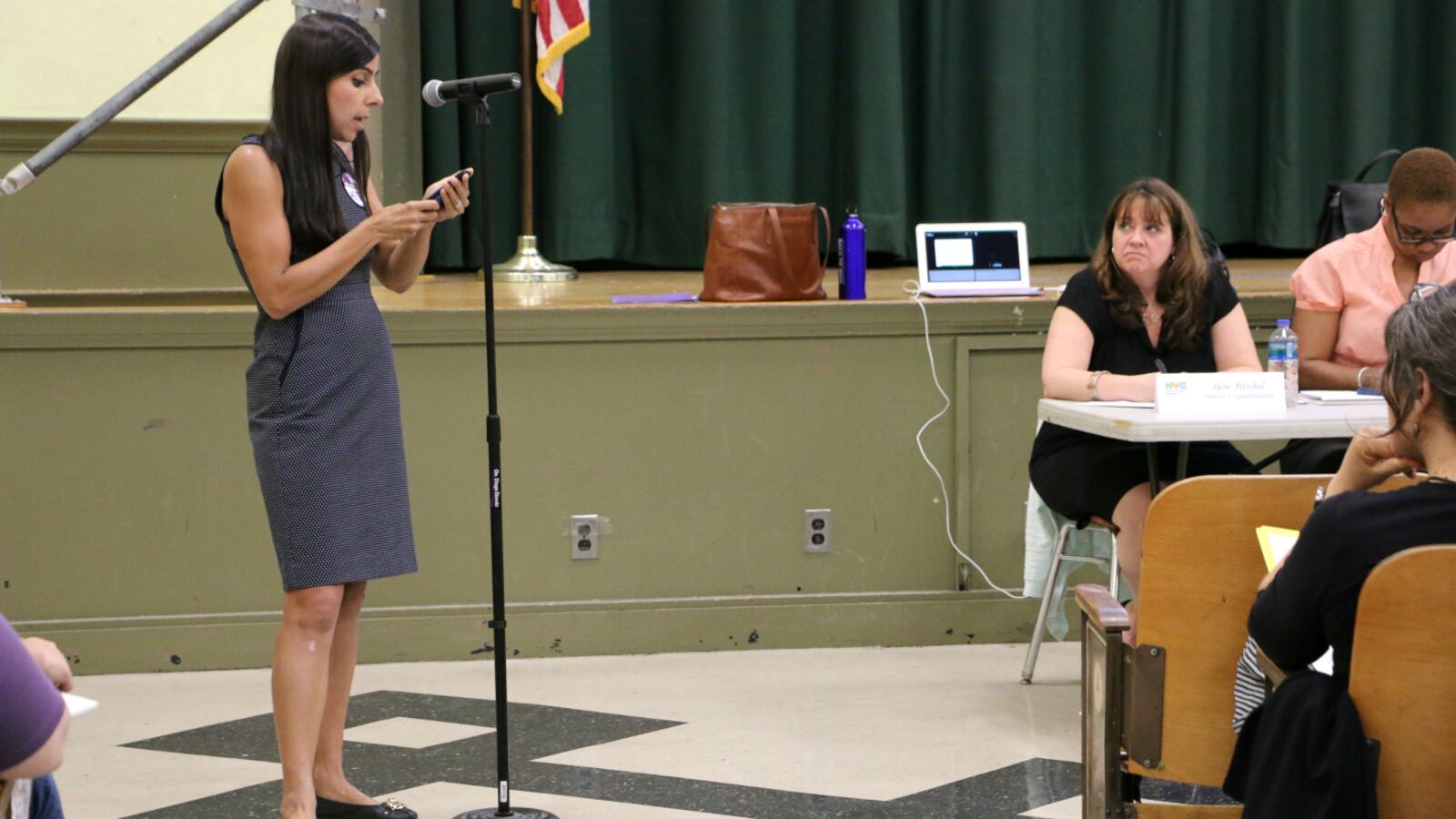This week marked the second time in less than a year that parents on the sharply segregated Upper West Side gathered in droves to protest a rezoning plan with the potential to make their schools more diverse.
This round, it was parents from P.S. 452 opposing a plan to move their school into a building 16 blocks south, where it would have more space and a new zone that could potentially include more low-income families. The school’s population is 74 percent white and Asian and 9 percent low-income, in a district that is 43 percent white and Asian and 48 percent poor.
At two meetings where the plan was discussed this week, parents wearing “Do Not Move P.S. 452” buttons explained that they had bought homes in the costly neighborhood around 77th Street to be near the high-performing school. While many said that segregation was a serious problem in the district, they found it unfair that their school should have to shoulder the burden of integration.
“Why do we have to fix that issue for the whole district?” one woman asked.
The backlash, which echoed the opposition to a different rezoning plan in the Upper West Side’s District 3 last fall, demonstrated again the conundrum facing the de Blasio administration around school integration.
The mayor has expressed support for school diversity, but he also has said the city must respect parents’ real-estate investments (a statement that at least one P.S. 452 parent repeated this week), while Chancellor Carmen Fariña has warned against forcing integration “down people’s throats.”
To city education officials, the rezoning battles reinforce a belief that they must move slowly and carefully to promote integration, letting individual schools lead the way.
But advocates question that logic. They say that some parents will always resist desegregation plans that limit their access to sought-after schools, so the city should power through the opposition and get behind district-wide plans.
“These partial, short-term solutions don’t really address the enduring problems of overcrowding, inequity, and segregation,” said Ujju Aggarwal, a member of the District 3 Task Force for Equity in Education, a small group of parents and educators pushing for an enrollment system designed to promote integration. “I think we do need strong leadership from the city.”

The city’s proposal would move P.S. 452 from the building it shares with two other schools to one on 61st Street now occupied by P.S. 191. That school would shift one block west into a building currently under construction.
The move could draw more low-income families into P.S. 452 since its new zone would likely include a nearby public-housing project. While the city has not openly called the move an integration plan, officials said they considered school diversity when crafting it.
Several P.S. 452 teachers and a handful of parents said they welcomed the move. Not only would it give the school its own gym and library, but it would also allow it to serve a broader cross-section of the community.
“The one thing I’m missing in my kids’ current education,” said P.S. 452 parent Beate Sissenich, “is a mixed-income constituency.”
The plan for a multi-school move follows a more straightforward proposal last year to rezone P.S. 191 and its neighbor, P.S. 199, a hotly desired school with high test scores and mostly affluent students. The idea was to reduce severe overcrowding at 199 by shifting some families from its zone to 191’s, a high-poverty school with much lower scores.
But after P.S. 199 parents showed up en masse at hearings to oppose the plan, the city tabled it. Now, P.S. 452 parents appear to be following their playbook.
They signed up by the dozen to speak at this week’s meetings, where they explained how the move would lengthen their children’s commutes and rupture the tight-knit community they had cultivated. They also rejected any suggestion that they do not value diversity.
“Painting any opposition as classist or racist is as bad as it can get,” said Jason Jones, the former “The Daily Show with Jon Stewart” comedian, near the end of Monday’s nearly three-hour meeting.
The rezoning debates have largely overshadowed calls for a “controlled choice” enrollment system that would eliminate the district’s zones and fill each school with a mix of students from different backgrounds. The resistance to rezoning just one or two schools has convinced some officials that the district is not ready for a large-scale zoning change.
Meanwhile, the local superintendent has floated the idea of requiring every middle school to enroll at least 30 percent low-income students. Already, some parents are questioning whether that plan will lower their chances of nabbing a seat at the district’s most popular middle schools.
“We think that diversity is clearly an issue that needs to be addressed in the district,” P.S. 199 parent Liz Sutherland said at a meeting Wednesday. But she asked whether the plan would achieve that, and worried that the city would place her daughter in a school “that is not a good fit for my child.”
Education department spokeswoman Devora Kaye said the city will continue to work with District 3’s parents, schools, and education council to come up with a plan that meets the community’s needs. She added that several public meetings are scheduled in the district, “where we expect a range of views to be shared.”

